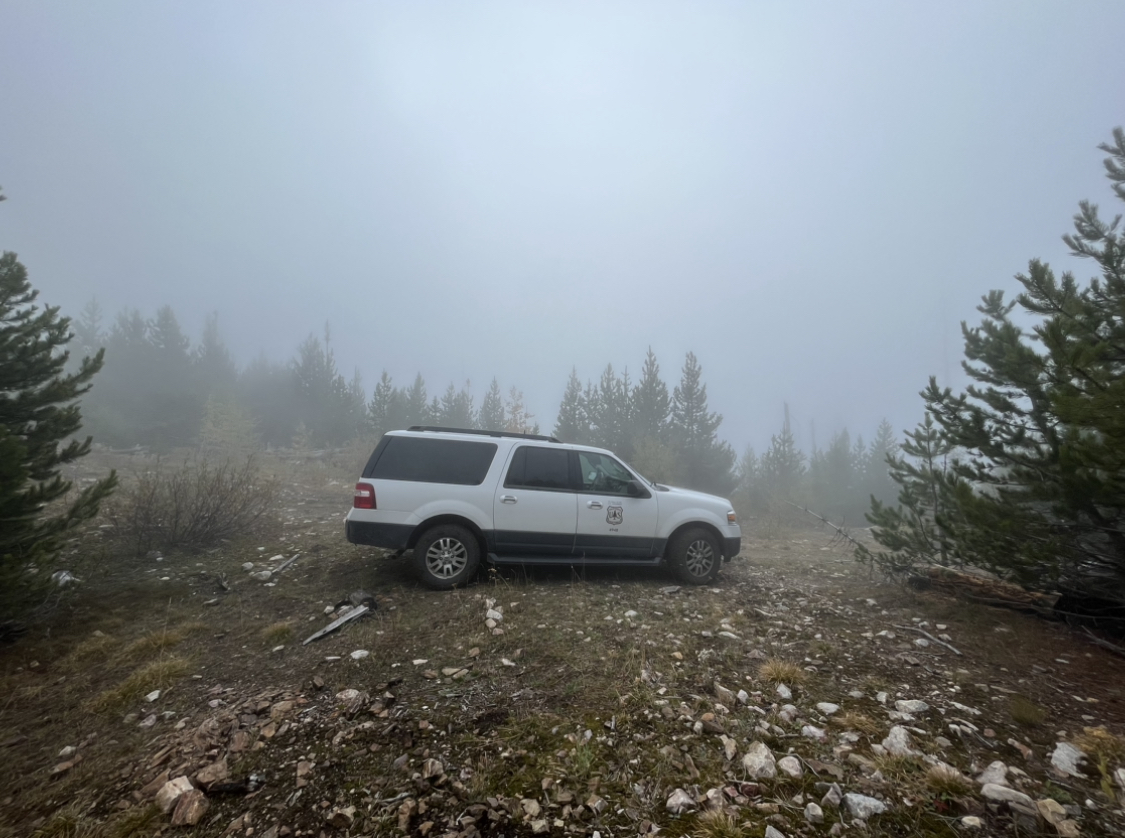For the duration of September, along with seed collection, the Tonasket botany team has been working on whitebark pine surveys. Whitebark pine, or Pinus albaulis, is considered a threatened species under the Endangered Species Act, but the Colville National Forest is fortunate enough to house multiple populations of this high-elevation tree. Whitebark is perhaps best known for its symbiotic relationship with Clark’s Nutcracker, the bird that cracks open their cones and bury pockets of seed around the mother tree for later consumption. Whitebark cones don’t open on their own, so they rely on the jays to forget where they’ve cached seeds in order for new whitebark to sprout and grow.
So far, we’ve headed to three different mountains to assess the health and distribution of the Colville’s whitebark. Because they specifically like high-elevation, rocky peaks, just getting to the survey site can sometimes be a full day’s work.


The first mountain we surveyed is Molybdenite, a 6,790-foot peak in the northeastern corner of Washington state. Because this mountain is a 3.5 hour drive from Tonasket, we headed out for a week, staying at a nearby Forest Service bunkhouse that was surprisingly comfortable and well-maintained (besides a little bit of a mouse problem). That week, we summited Molybdenite twice to map whitebark spread across the peak and surrounding area. We were warned that three grizzlies call the mountain home, but our biggest problem did not end up being bears, but holding onto our cell phones, and not getting lost. Two surprisingly challenging tasks when bushwhacking through a forest you’ve never been in before.

The next peak we set out to survey was Mt. Leona, a 6,440-foot peak an hour and a half east of Tonasket. Luckily, there was a road that allowed us to drive almost to the summit. Unluckily, that road was a treacherous mess of rock and loose gravel that made for a white-knuckled ride. By the time we reached the top of the mountain, we were so thoroughly engulfed in a cloud that it was a challenge to ID trees more than 15 feet in front of us. As you can imagine, this made scouting for whitebark a bit more challenging. The howling wind and partially burned forest contributed to an eerie vibe befitting of the first official week of fall. It should also be noted that the temperature at the top of Leona was 45F before the wind chill, an incredibly stark difference from the balmy mid-70s of the week prior. I was very glad to have purchased a new down jacket the day before.


Our most recent whitebark-related adventure occurred on a mountain our team is intimately familiar with, sitting within the project area we’ve been working on all summer, Mt. Bonaparte. This 7,260-foot peak was the highest we’d been to, and one of the longer hikes from our parking area. It was really amazing to get to the top of a mountain that I’d seen countless times from the road and heard about on the radio, but I didn’t necessarily get to see those roads from the other POV, because yet again we were deeply enmeshed in a cloud. I thought I was cold on Leona until I got to Bonaparte. Despite the chill and misery of the peak, there were many whitebark pine trees to be found, and we had a large crew amassed to figure out how far they spread down the unburned half of the mountain, so we persisted, slowly warming up as we descended from the sky.


Despite what felt like a near miss with hypothermia, it was really cool to see a threatened species thriving within the forest we’ve been working in and getting to know all season. In a weird way, there’s a sort of ownership and pride, even though I’ll probably never be back in Tonasket after this season ends. I hope that Colville National Forest’s whitebark outlives me by far, keeping with it a memory that at one point in time, I was here to see it.
